Dear creative friends,
Welcome to the latest edition of the StudioWorks Journal! I am filled with gratitude to have you by my side on this creative journey, and I can't wait to share this exciting new exploration with you. For the next three issues, we will be exploring different mediums. Not just in a technical way but rather with a historical, emotional and sensitve lens. I strongly believe that mediums are languages through which the artist expresses themselves and they each can teach us much about ourselves.
This month, we are diving into the enchanting world of watercolor, a medium that is as unpredictable as it is beautiful.
Watercolor, with its fluidity and spontaneity, invites us to let go of control and to learn from its gentle wisdom. As artists, we don't just paint with watercolor; we collaborate with it. This month, I invite us to delve into the inherent magic and transformative power of this medium. As we journey together through this art form, we will learn not only to express ourselves more fully, but also to listen – to the water, the pigment, the paper, and, ultimately, our own intuitive guidance.
The fluid nature of watercolor challenges us to let go, to embrace imperfection, and to find beauty in unexpected places.
Let's explore this wondrous medium together, let’s grow, and most importantly, let's let the watercolor teach us its lessons about art and about life.
xo,

So you may be wondering, where do I start? To that, I say, wherever feels right to you. Each month we will have a theme, a creative affirmation, a power word, a color palette, sketchbook exercises, art projects, articles, recommended reading, and access to wonderful inspiration and resources. I want you to think of this as a delicious new magazine, you know the ones you occasionally splurge on, with soft, velvety pages, beautiful images, and inspiring content!
Each issue will invite you to explore your creative practice in whichever way works for you. Experience each issue at your own pace. Take what resonates with you and put the rest aside for another time.
Grab a cup of something lovely and dive in.
The artist community sometimes treats watercolor flippantly, dismissing it as a medium for beginners or simple, preliminary sketches. However, the truth is that its accessibility is one of its great strengths despite offering an easy opening for misconception. Many masters have explored this fine vehicle revealing just how superb the effects can be. When viewing their achievements, there can be no illusion of base simplicity or lack of refinement.
Still, watercolor is indeed accessible to ordinary people and children too. It is a playful medium that accepts all kinds of brushstrokes, which may be why it finds such broad use in folk arts across the globe. It also readily bridges the gap between folk and fine art, as displayed by its use in tattoo flash, traditionally painted in watercolor. Though tattooing has decidedly folk origins, it now receives recognition as a fine art by no lesser institutions than the Smithsonian. A demonstration of how with time, all judgments may be subject to review.
Exploring the history of watercolor opens the door to examining the beginnings of art itself. Adding a pigment to water is one of the original ways people discovered to transfer creative ideas from the realm of the mind onto a visible surface. This process began in prehistoric times with cave murals such as those found in Lascaux, France.
From primitive paintings, watercolor evolved into more elaborate works such as those created by ancient Egyptians in their tombs and temples. They were also the first to apply it to paper which they made from papyrus.
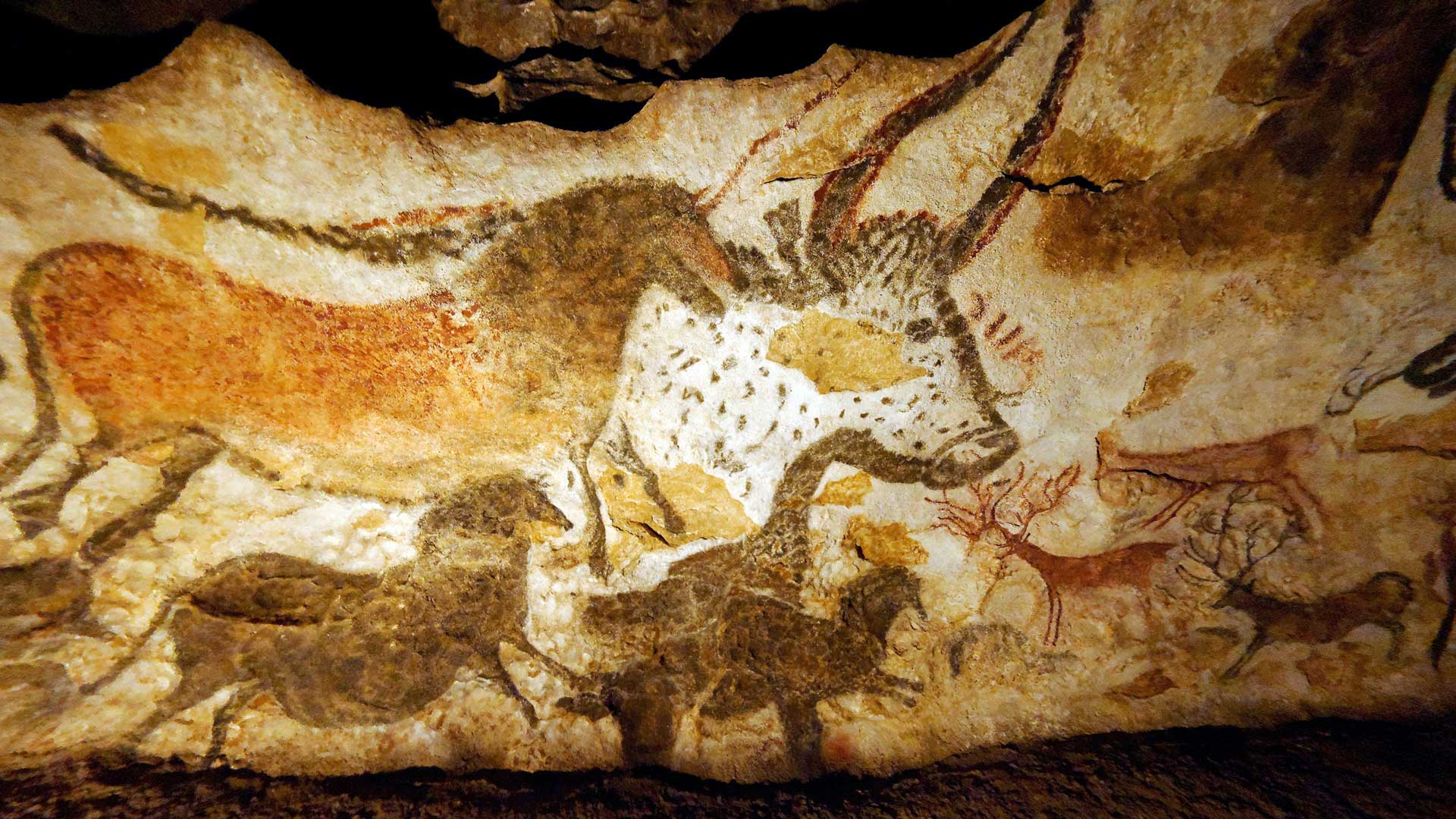
Additional significant contributions to watercolor originated in Asia. The earliest Chinese works date from around 4,000 B.C., and their influence spread to Japan over time. Both nations eventually gained international recognition for their painted silks and gorgeously executed landscapes on beautiful handcrafted paper. Not to be outdone, India and Persia also made a splash (so to speak) using the opaque sister form of water media, gouache, in their Byzantine-inspired religious paintings.
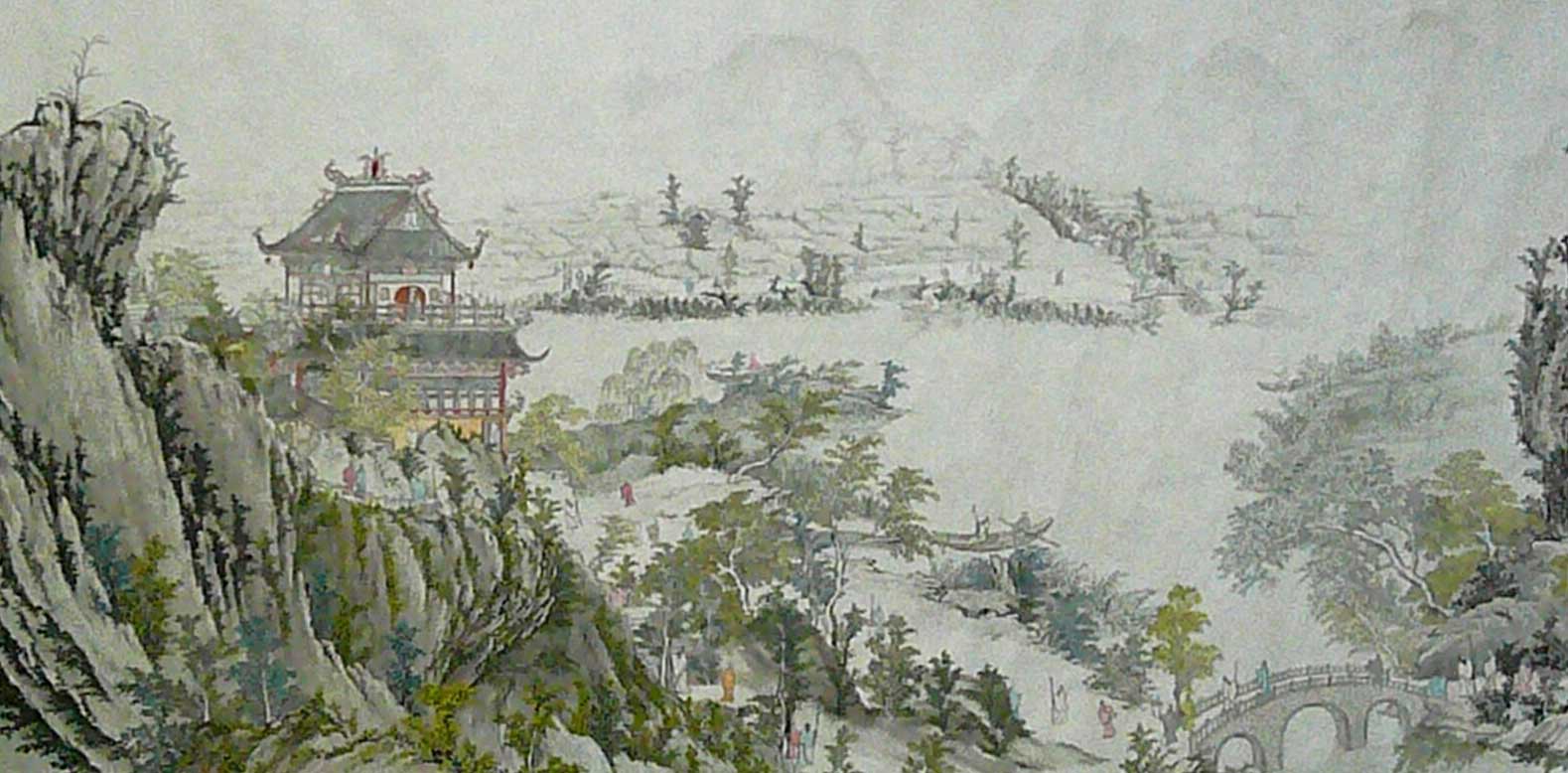
Another notable historical watercolor form, fresco, meaning fresh in Italian, is one of the oldest known painting methods wherein watercolor is applied directly onto wet plaster. The style reached its apex with 16th century Italy’s buon fresco method. The most famous works of this era are Michelangelo’s Sistine Chapel and Raphael’s Stanza Murals, located in the Vatican.
During the Renaissance, artists such as Albrecht Dürer, Rembrandt, and Rubens made watercolor popular as an instrument for shading and tinting and an educational tool for sketches, studies, and copies. Dürer's studies spurred an entire school dedicated to watercolor run by Hans Bol. Notably, though it was an official part of formal artistic education, it was not considered worthy of reverence during this period, unlike its creative cohorts, oil painting, and printmaking.
In time, this was destined to change thanks in no small part to three 18th-century Englishmen, Paul Sandby, Thomas Girtin, and J. M. W. Turner. These three receive credit for bringing watercolor into esteem as a mature, independent, and refined art form. Turner was also a business mastermind; his efficiency in producing paintings and his first-of-its-kind personal art gallery made him a multimillionaire, adding more credence to the value of watercolor.
The trend continued in the following century as an interest in the natural world took hold. Thus, the time was ripe for artists like naturalist James Audubon to make famous using watercolors for scientific illustrations and field guides, a custom that continues today. These works further demonstrated how functional, beautiful, and evocative watercolor can be.
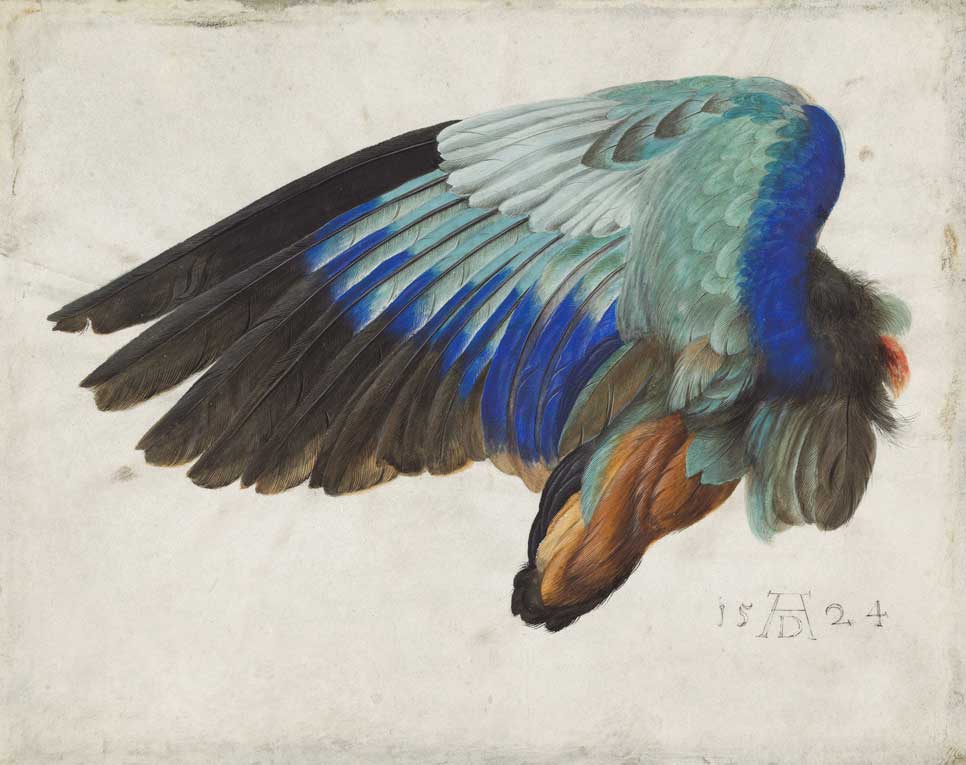
Left Wing of a Blue Roller, c. 1500 or 1512 Albrecht Dürer
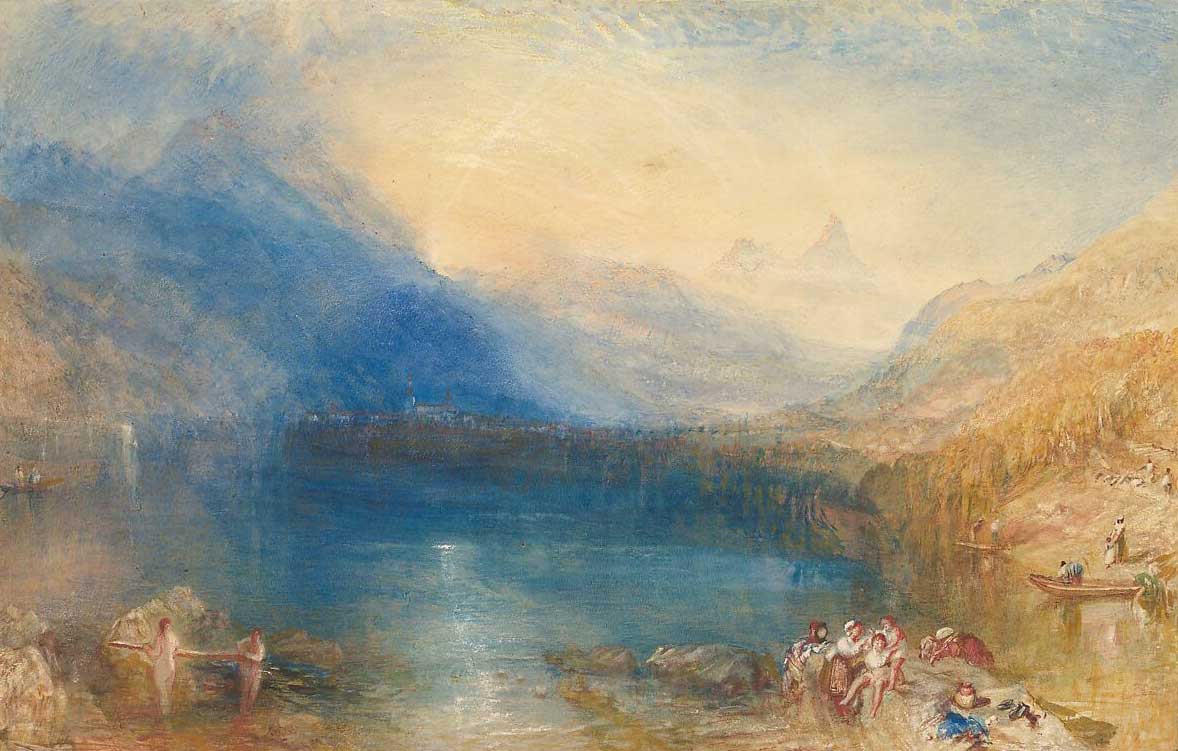
The Lake of Zug, 1843 J. M. W. Turner
Though saluting every excellent watercolor painter would require volumes, singing a few more praises feels fitting. From the epic period of American West art, there is the explorer artist George Catlin and the man to whom we owe the preservation of Yellowstone as the very first National Park, Thomas Moran.
Amongst female artists, the delicate layers and warm tones of Elizabeth Murray make her style immediately recognizable and help explain her immense popularity. She also left her mark by using her fame as a platform for creating the first Society of Female Artists. Also of note, Georgia O’Keefe had a watercolor period that gets credit for helping her discover her distinctive and renowned style.
Through an adept exploration of the abstract, the works of Paul Klee gained great prestige and are considered among the finest artistic accomplishments of the last century. Also along a more modernist line, the paintings of self-taught artist Antonio Calderara demonstrate the stylistic versatility of watercolor through his unique expressions of light and form.
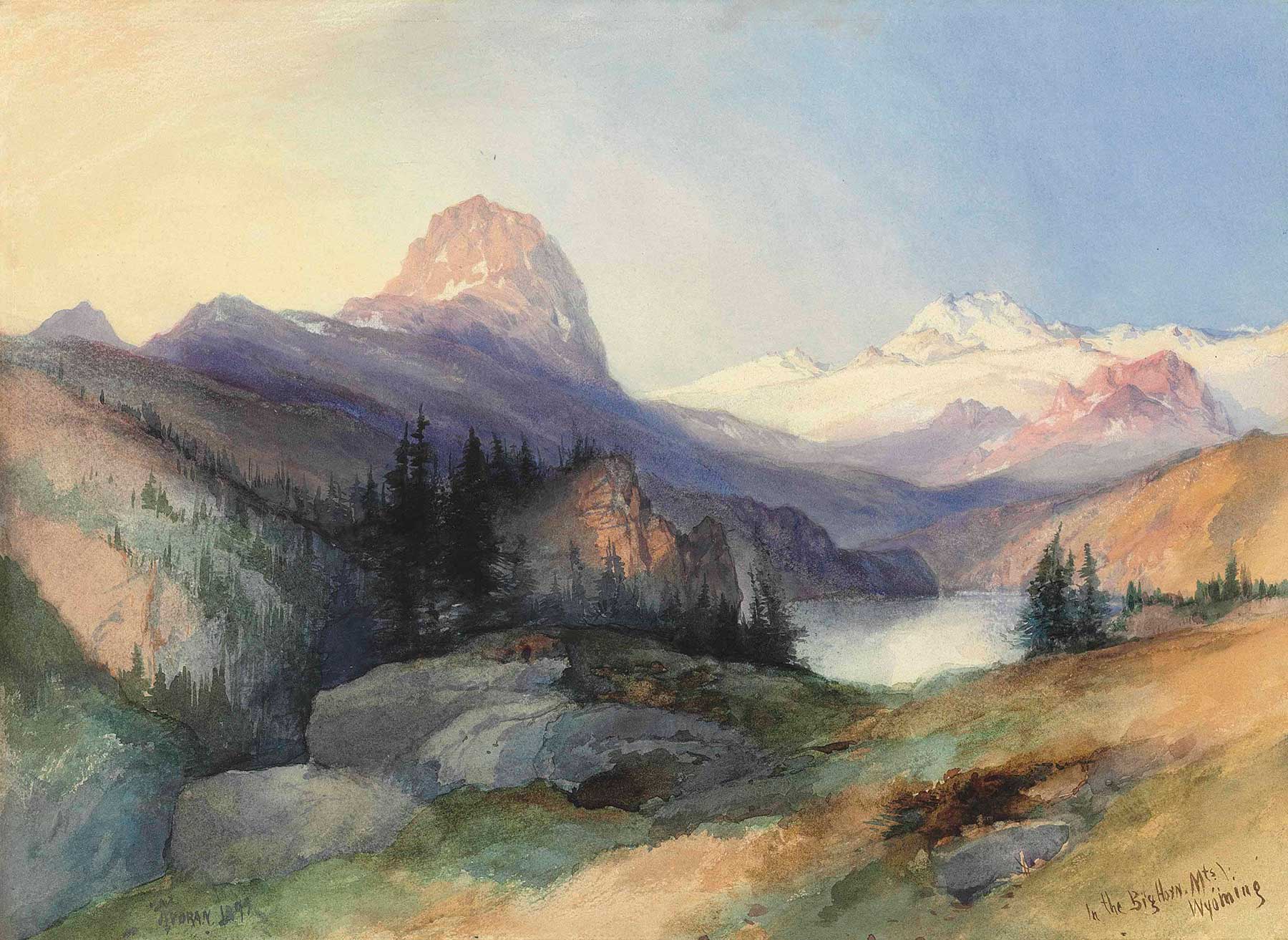
In the Big Horn Mountains, Wyoming, 1899 Thomas Moran
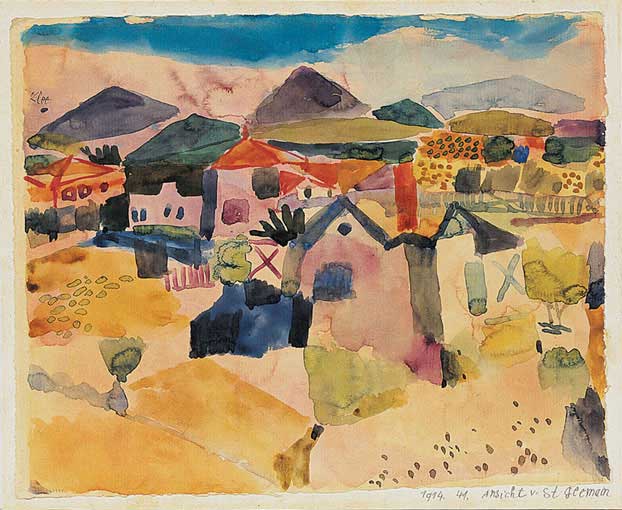
View of Saint Germain (1914) by Paul Klee
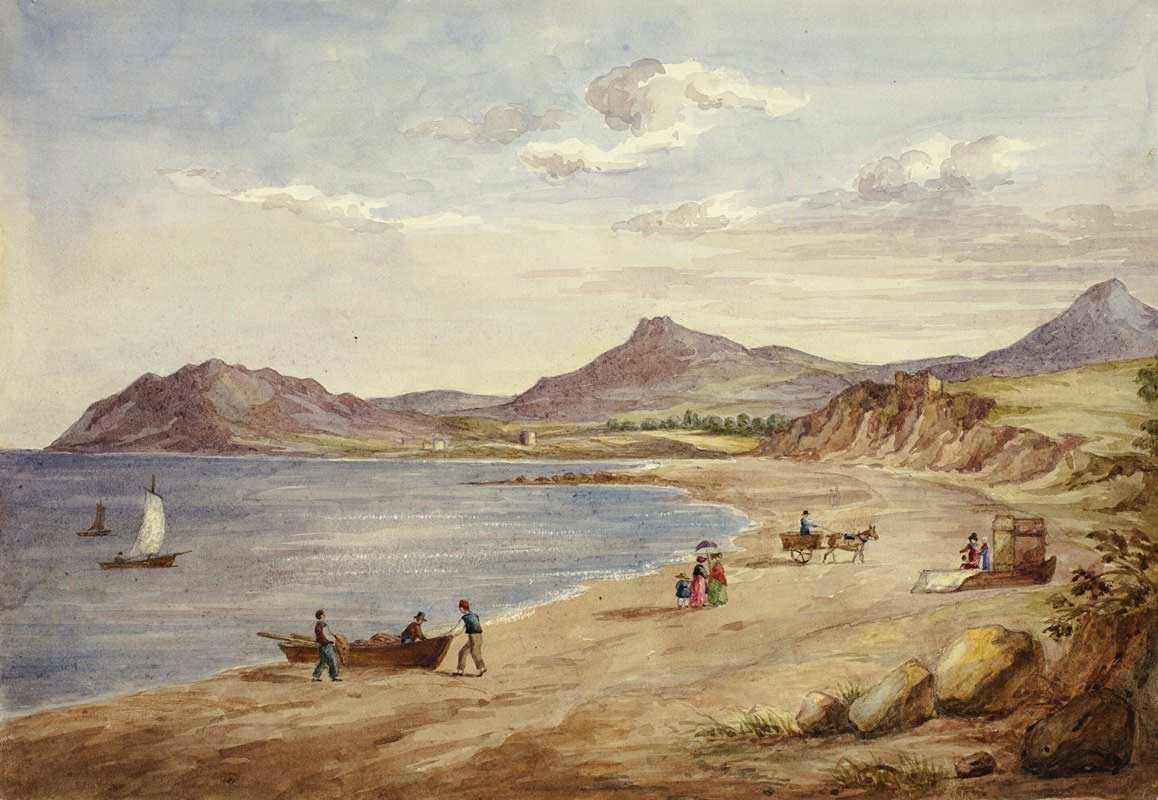
View of Wicklow Hills, 1843 Elizabeth Murray
Watercolor has been around for a very long time, gracing each corner of the globe and finding application on every imaginable surface, from silks to stone. It has gone in and out of vogue and been treated as lowly and held in high esteem, but it has never come close to falling out of use.
The reasons for this are many, but among the most obvious is that it is friendly to young and old, highly skilled and amateur, rich and poor. It is inclusive, available to all, and broad in application. In a nutshell, watercolor is a people’s medium and one worthy of exploration.
An excellent way to create is to be a vessel or channel through which ideas can freely flow. Certain media readily lend themselves to this quality of fluidity, favoring immediatism and teaching us how and when to let go. Watercolor reigns supreme in this realm, offering lessons and insights to artists, young and old.
If we tune in, it is possible to make out a distinct language expressing itself through each medium. By paying attention to these unique voices, we open ourselves to evolve as artists. From this open state of stillness, we can become available to the wisdom floating on the fluid voice of watercolor. Let’s listen in now.
It’s a rare artist who hasn’t played with watercolor at some point in their process. Being affordable, portable, easy to clean up, and requiring little equipment can account for this. Still, the medium's complexity and infinite potential have yet to be explored by many.
However, for those who have mastered watercolor, their reverence for the medium is absolute. Accomplished artist Rusty Walker captures this beautifully: "There is a magical quality in the reflection of transparent watercolor against the white of the paper that is uniquely brilliant and alluring. The watercolor, like a fine-tuned musical instrument, can be expressed effectively through harmony and contrast, with the charm of a Sonata, the mystery of a nocturne, or power of a symphony.”
In just a few lines, Walker pays tribute to watercolor's luminous quality, reminding us that the light reflecting through from the paper is as much a part of the art form as the paint you apply. Furthermore, he highlights how musical is the voice of watercolor and how capable it is of being wielded in disparate ways. Using this insight and enthusiasm is a great place to begin when incorporating watercolor into your own creative practice.
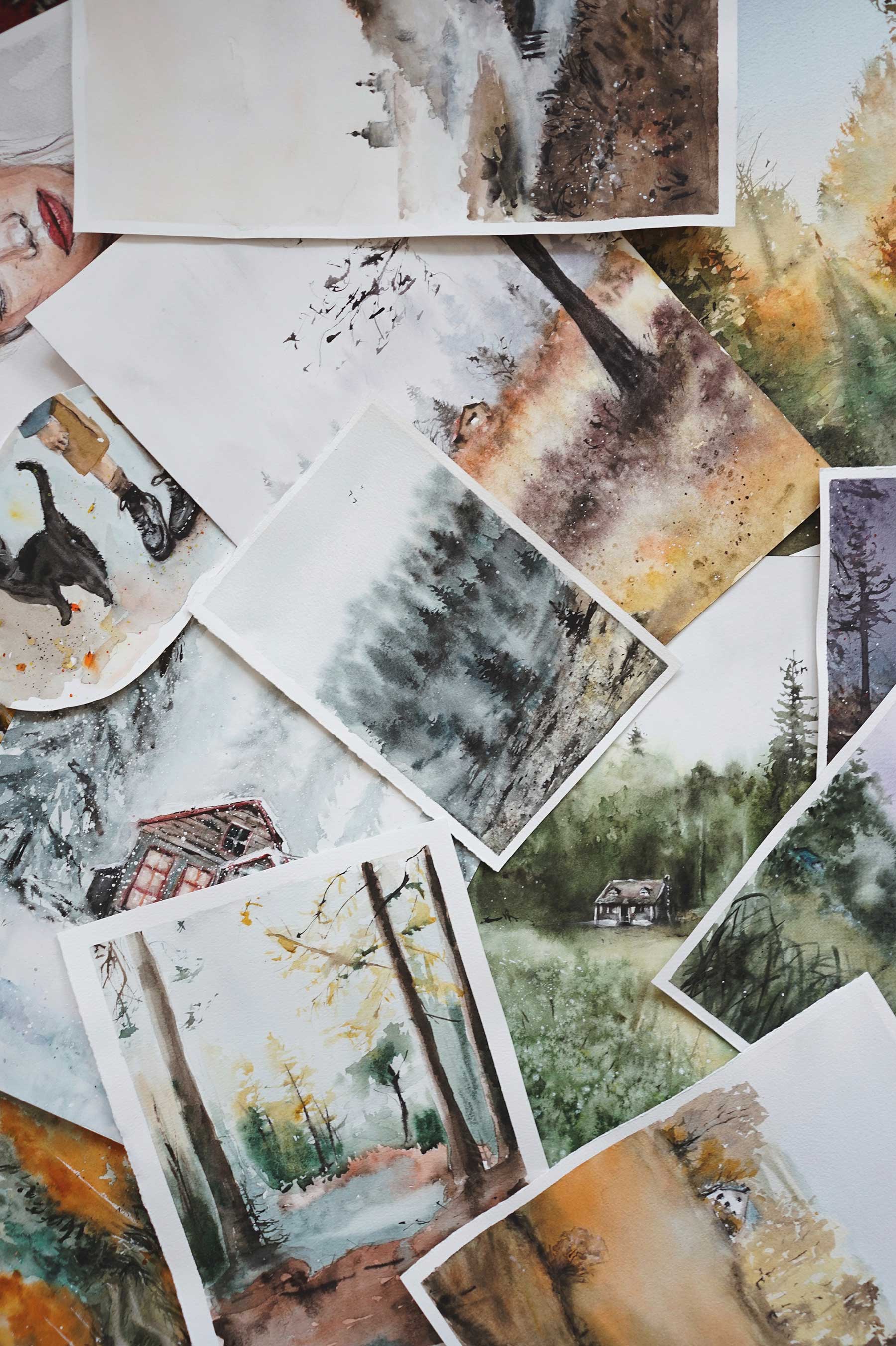
For example, before you begin painting, decide what kind of piece you feel moved to create. Something focused in a narrow band of color as a sonata played on a single instrument? Or, perhaps a night scene, something alluding to darkness, that evokes the mood of a nocturne? Maybe those options feel too narrow or specific, and you want to go grander in scale and broader in your use of color, as would befit an entire symphony?
There are no wrong choices; the point here is to conjure a mood and run with it. Allow the ephemeral quality of the quick-drying paint to guide your movements. Pay close attention to your subject's light and help it shine through.
In fact, another exercise to aptly explore watercolor is to select a subject based on lighting deliberately. It could be a familiar scene at sunrise or sunset, a plant in a window that catches the afternoon light so the veins of the leaf glow like stained glass, or an image of someone you love where the sun has given them a halo as it streams through their hair.
In addition to plays of light, explore the diverse range of approaches to watercolor, from the quick sketch that captures a fleeting mood to a layered piece that builds color slowly as each segment dries. You and the span of your imagination set the limits to what is possible, so dive deep and enjoy what surfaces!
With water in its name, it’s unsurprising that watercolor as a medium urges us to be in flow, to discover the whimsy of a moment, and find serendipity, or happy accidents, in what can initially feel like mistakes. This is what the fluid voice of watercolor says to us, to be patient and persevering yet creatively free, clear in our intention while flexible to the moment's needs. Above all, it reminds us to keep our focus on the light, including knowing when it’s best to lighten up.
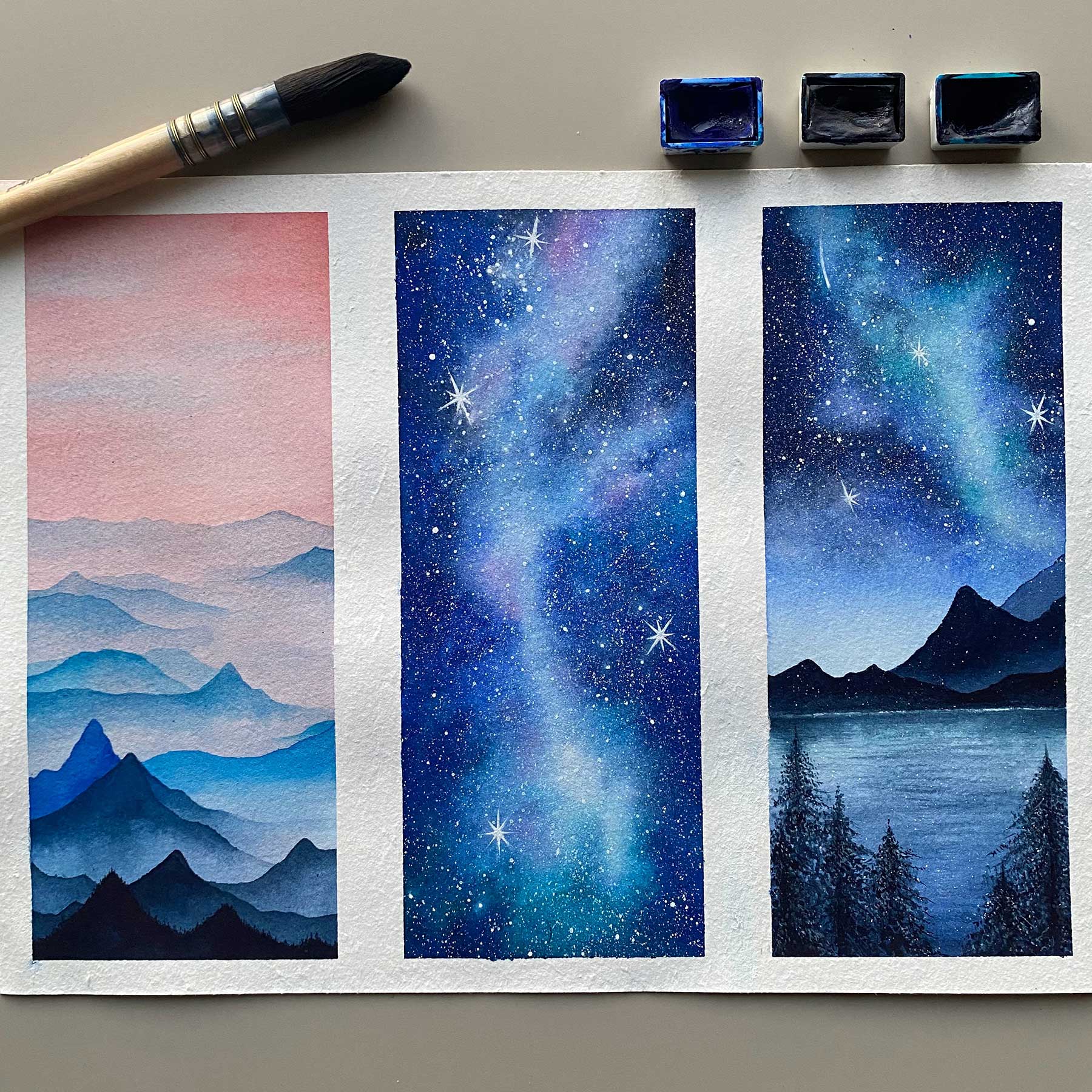
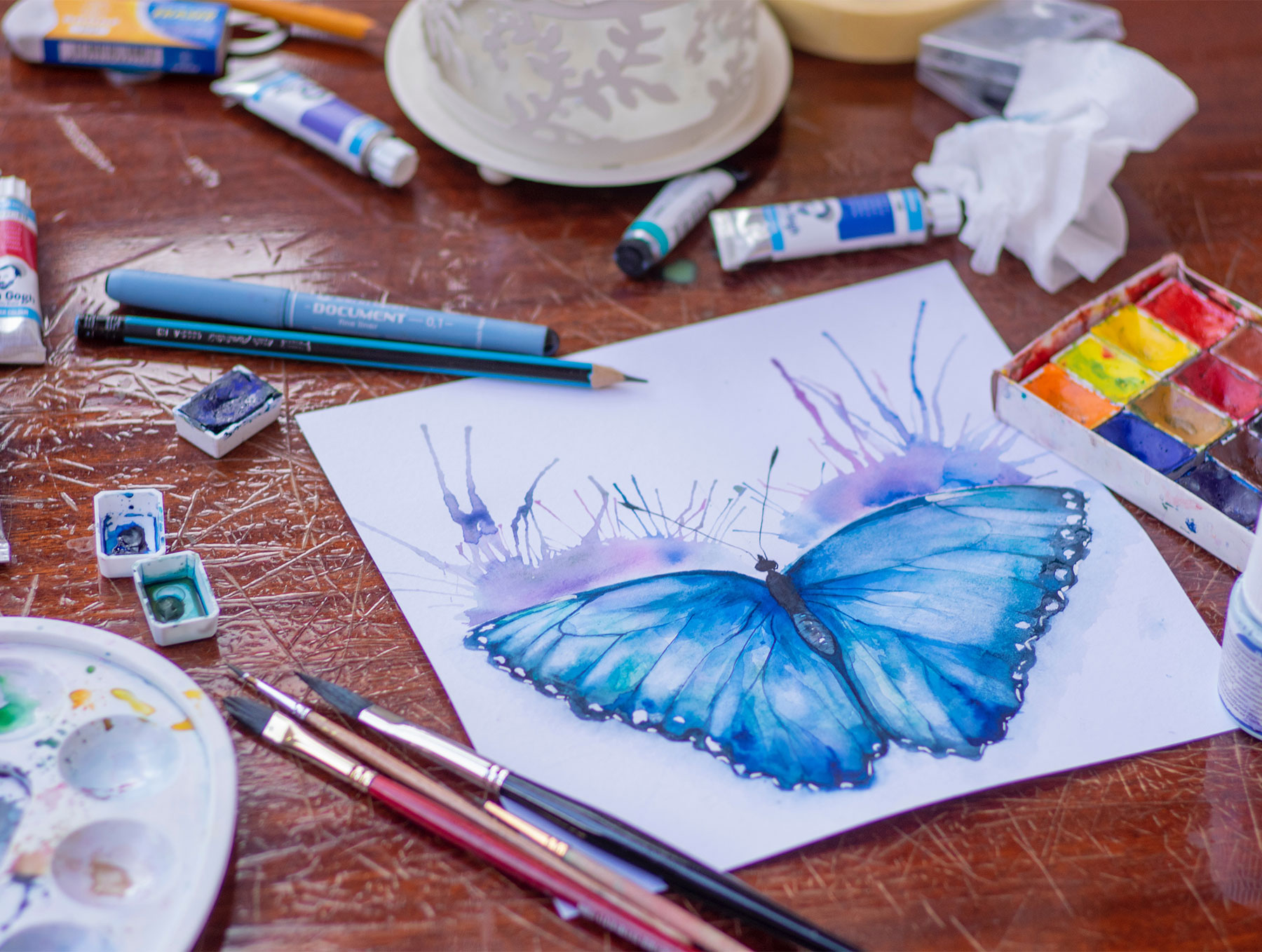
In the context of watercolor painting, fluidity has a couple of relevant meanings:
Firstly, watercolor paint is literally a fluid medium. It consists of pigments suspended in water, which flow freely across the paper when applied with a brush. The artist must learn to work with this fluidity, guiding the paint while also allowing it to move naturally. This physical fluidity is one of the unique and defining characteristics of watercolor painting.
Secondly, fluidity can refer to the artist's adaptability when working with watercolors. Watercolor paint behaves in unpredictable ways, often blending and spreading on its own accord. To be successful with watercolors, the artist must exhibit a sort of fluidity in their practice - being able to respond and adapt quickly to the way the paint behaves, seizing unexpected opportunities and dealing creatively with challenges.
Thus, both the literal and metaphorical senses of "fluidity" are essential to the practice of watercolor painting.
I love the dreamy energy of this poem that so aptly describes the act of working with the ethereal medium of watercolors. Enjoy.
Get those journals and sketchbooks out and get ready to do some self-reflection and writing. Try not to judge what comes out of these writing sessions. Don’t worry about punctuation or grammar or any of that. You can even just make lists if that suits you better. Remember, journaling is a deeply personal practice, so feel free to adapt these prompts to better suit your own thoughts and experiences.
Take a moment to get quiet. Still yourself by doing some gentle breath work. Light a candle. Now ask yourself some questions to reflect upon -
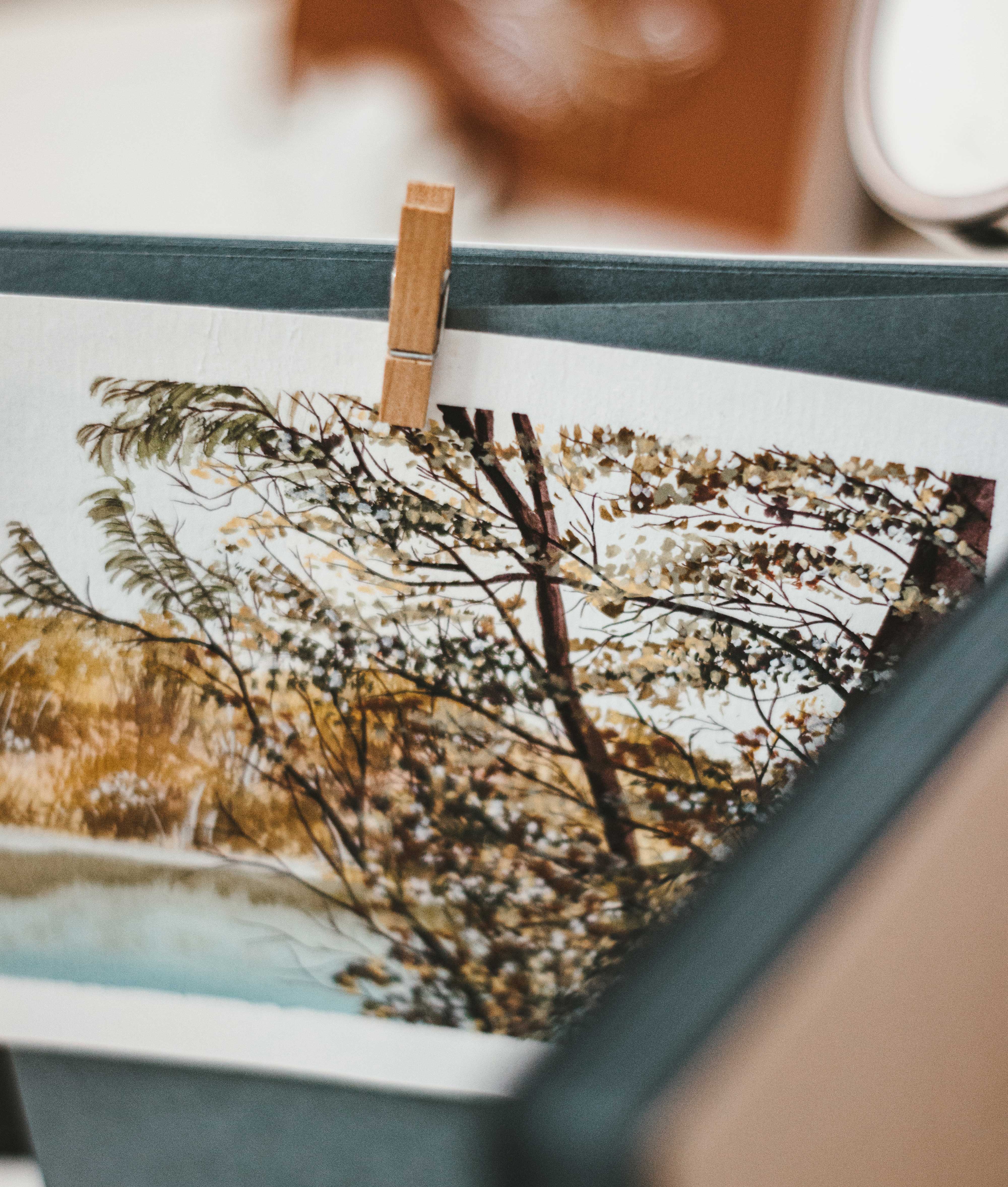
I am sharing this beautiful energy experience session from one of my favorite meditation masters - Rachel Hillary. This journey will help you to surrender to an ocean of love. Give yourself some quiet time to enjoy this beautiful meditation.
Rachel will share a little about this experience -
Rachel will share a little about this experience -
This is an immersive experience I created to help you gently relax, let go, and lean into the expansive ocean of loving energy available to you. I created it for those moments when things feel too painful, too difficult, and we forget we have so much loving energy available to us, it's like we tune out. I hope this experience allows you to tune back in and feel peaceful. There are no ending words or ending bell, it's perfect if you want to fall asleep afterward. Music by Chris Collins
lots of love,
Rachel
Each month we will have a positive affirmation. I recommend you print out this affirmation and put it in your sketchbook or somewhere in your studio. Recite the affirmation out loud each time you show up to create. Saying words aloud is powerful and can begin to re-write some of our own limiting beliefs or calm our fears. Try it now…
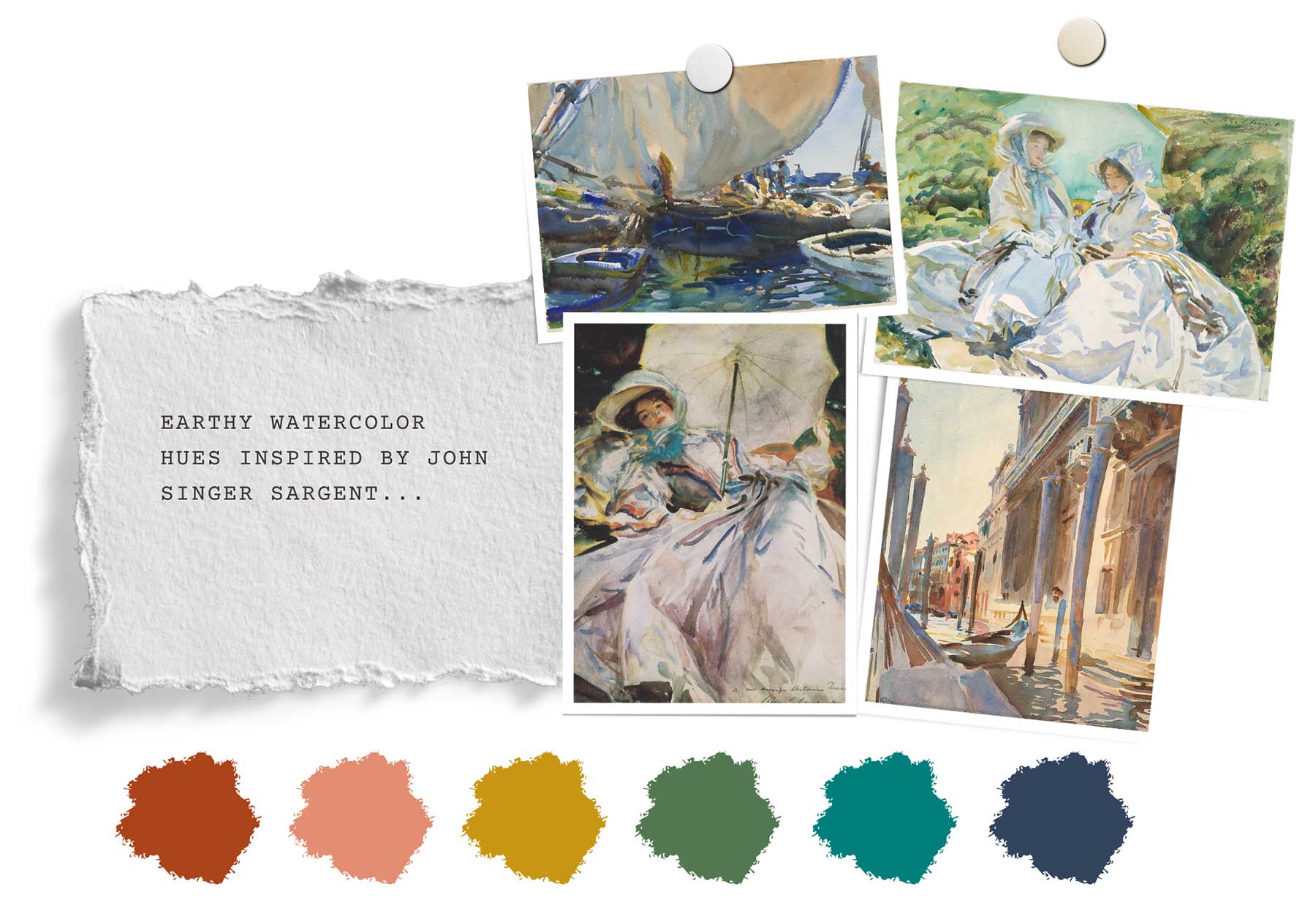
This month we are inspired by our master artist, John Singer Sargent. Sargent was a renowned American artist, known for his exceptional use of color in both his oil paintings and watercolor works. In his watercolors, Sargent demonstrated a mastery of color that brought vibrancy, richness, and a sense of life to his compositions.
Sargent approached watercolor with a bold and confident use of color. He utilized a wide palette, incorporating a broad range of hues to capture the essence of his subjects. His watercolor landscapes, portraits, and scenes were imbued with a remarkable sense of light and atmosphere, achieved through his judicious choice and application of color.
One of Sargent's distinctive approaches was his use of complementary colors to create dynamic visual impact. He skillfully juxtaposed warm and cool tones, placing them in close proximity to heighten their vibrancy. This interplay of contrasting colors created depth and a sense of three-dimensionality in his watercolor works.
Sargent's color choices were not limited to direct representation but often included expressive and interpretive elements. He would manipulate colors to convey mood, atmosphere, and a sense of movement. By applying washes of translucent color and leaving areas untouched, he achieved luminosity and a delicate sense of transparency in his watercolors.
Moreover, Sargent's remarkable ability to capture the play of light and its effect on color was evident in his watercolor paintings. He observed and translated the subtle shifts in hue, value, and temperature that occur under different lighting conditions. This attention to the nuances of color and light allowed his works to evoke a sense of natural realism and visual harmony.
Through his skilled use of color, Sargent elevated watercolor painting to a level of sophistication and virtuosity. His ability to capture the essence of his subjects, whether landscapes or people, through his nuanced color choices remains an enduring aspect of his artistic legacy. Sargent's watercolors continue to inspire artists today with their luminous palettes, expressive use of color, and the sheer joy of his artistic vision.
Some of his favorite colors used in his watercolor works were -
Cobalt Blue: Sargent often employed cobalt blue in his watercolors to capture the vibrant hues of skies, waters, and atmospheric effects. It lent a sense of luminosity and depth to his landscapes and seascapes.
Gamboge: This warm yellow pigment was a staple in Sargent's palette. It allowed him to depict sunlight, highlights, and warm tones, adding brilliance and vitality to his compositions.
Rose Madder: Sargent employed rose madder, a rich reddish-pink color, to convey warmth, delicacy, and floral tones. It added a touch of romanticism to his floral studies and portraits.
Viridian Green: Sargent often used viridian green (it was a favorite) , a cool and intense green pigment, to depict foliage, verdant landscapes, and areas of shadow. Its transparent nature allowed for the creation of depth and a sense of light filtering through leaves.
Burnt Sienna: This warm earth tone was frequently used by Sargent to capture the warmth and depth of skin tones, as well as to suggest the play of light and shadow. It added a sense of naturalism to his portraits and figurative works.
Prussian Blue: Sargent employed Prussian blue, a deep blue pigment, to convey richness, depth, and dramatic shadows. It allowed him to capture the coolness and intensity of shadows in his watercolor compositions.
Let’s play with these tones and blends and see where this color palette can take us!
*For my color geeks here is his full watercolor palette (according to my research): Alizarin Carmine, Brown Pink, Burnt Sienna, Cadmium Yellow Pale, Chrome Yellow, Cobalt Blue, Gamboge, Lamp Black, Rose Madder, Ultramarine Blue, Prussian Blue, Vandyke Brown, Scarlet Vermillion, Deep Vermillion, Viridian, and an opaque white.
As one of the most celebrated artists of his time, Sargent's mastery extended beyond his renowned oil paintings, encompassing a breathtaking command of the watercolor medium.
In this study, we delve into the world of Sargent's watercolor paintings, exploring his unique approach, techniques, and the emotive qualities he infused into his works. Sargent's watercolors reveal a virtuosic understanding of color, light, and composition, capturing fleeting moments with extraordinary skill and sensitivity.
Let’s learn more about this incredible artist…
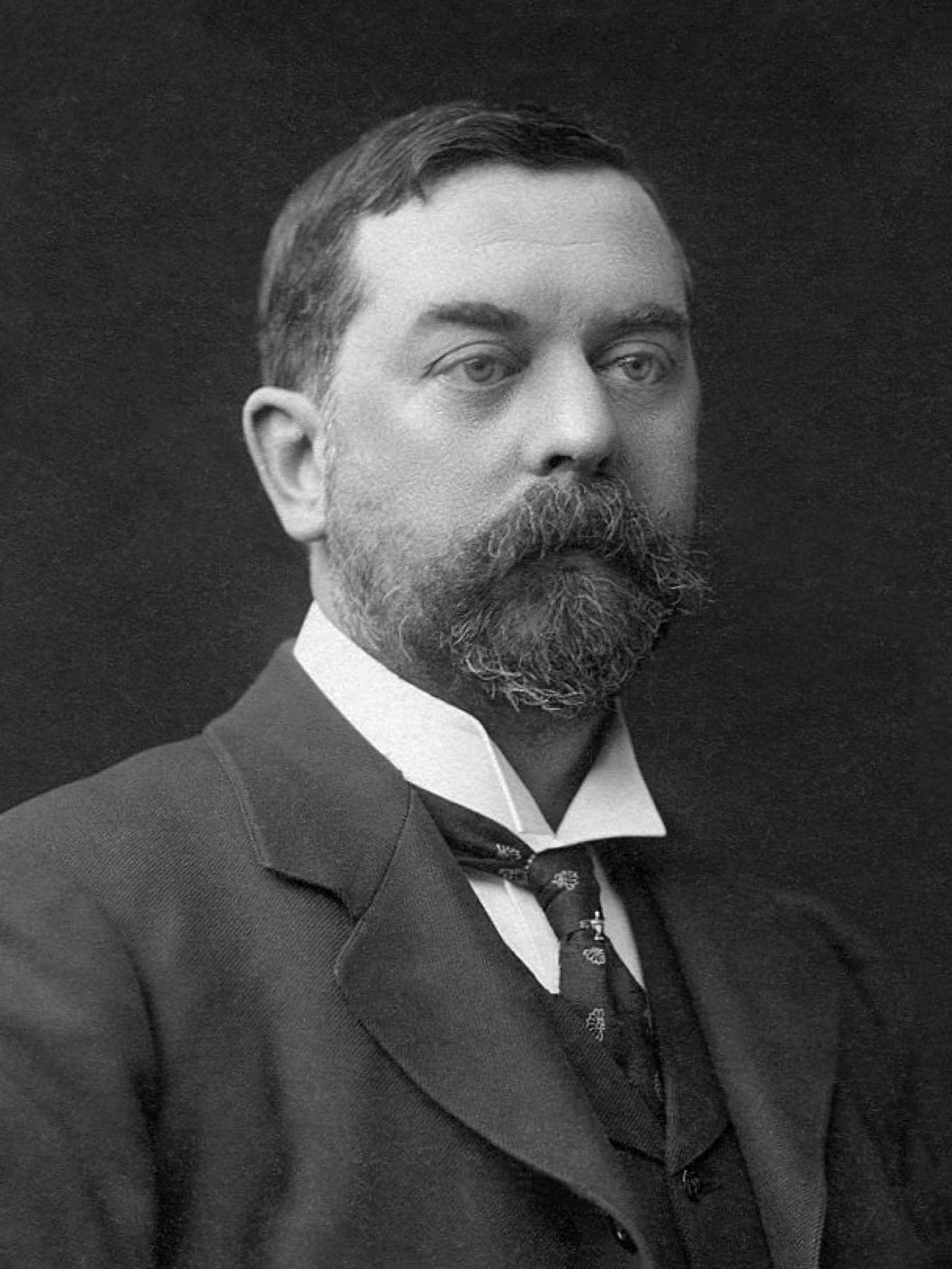
John Singer Sargent was born on January 12, 1856, in Florence, Italy, to American parents. He showed artistic talent at an early age and received formal training in both Europe and the United States. Sargent studied at the Academy of Fine Arts in Florence and later at the École des Beaux-Arts in Paris, where he honed his skills in drawing and painting.
Sargent gained recognition primarily as a portrait painter, earning commissions from high-profile clients across Europe and America. His portraits, characterized by their elegance, precision, and capturing of the sitter's personality, established him as one of the leading portraitists of his time. However, alongside his oil paintings, Sargent also dedicated himself to exploring the watercolor medium.
Sargent's watercolor works demonstrated his versatility, skill, and mastery of the medium. He often painted en plein air, immersing himself in the landscapes and scenes he encountered during his travels. His watercolors showcased his ability to capture fleeting moments, vibrant atmospheres, and the play of light with remarkable accuracy and sensitivity.
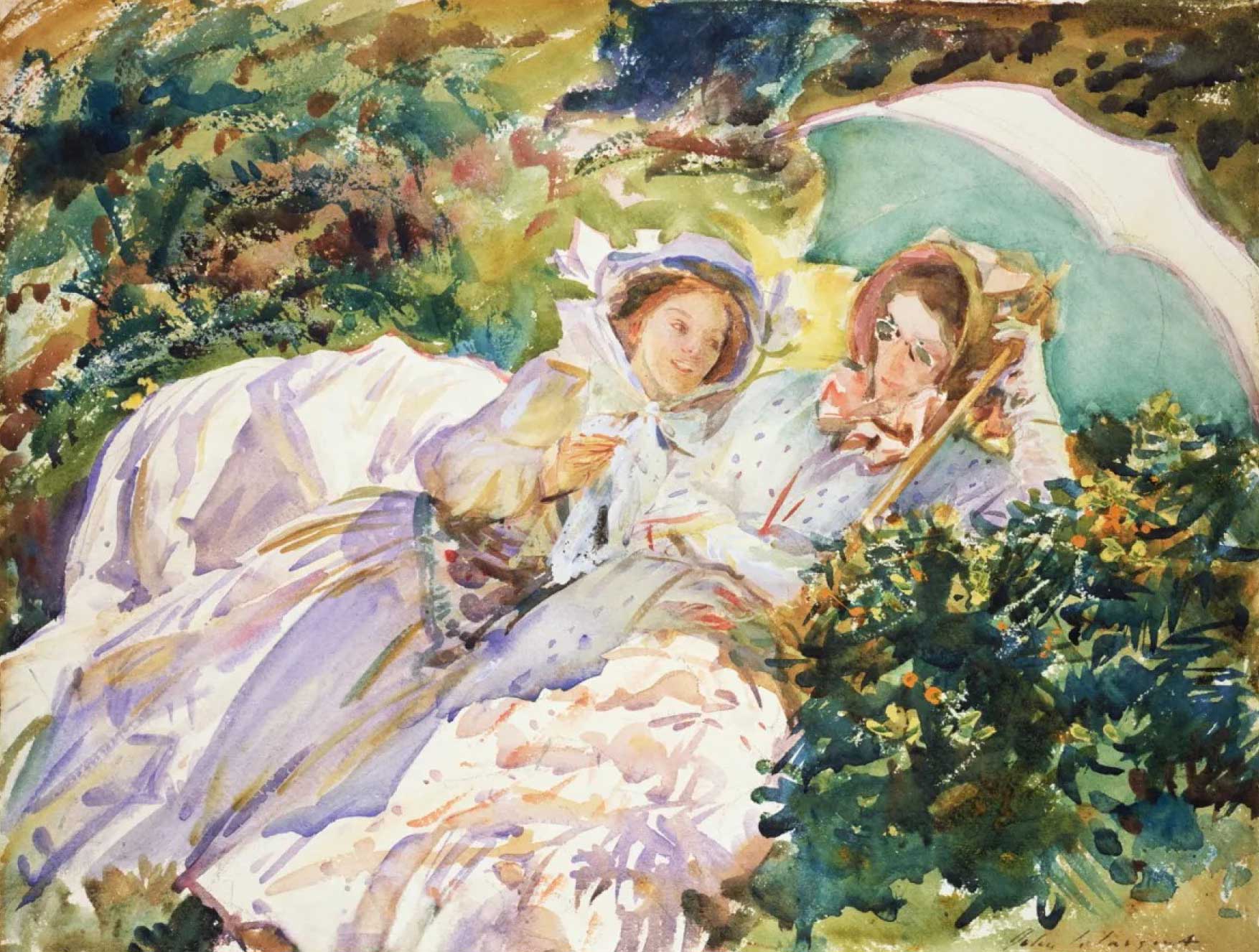
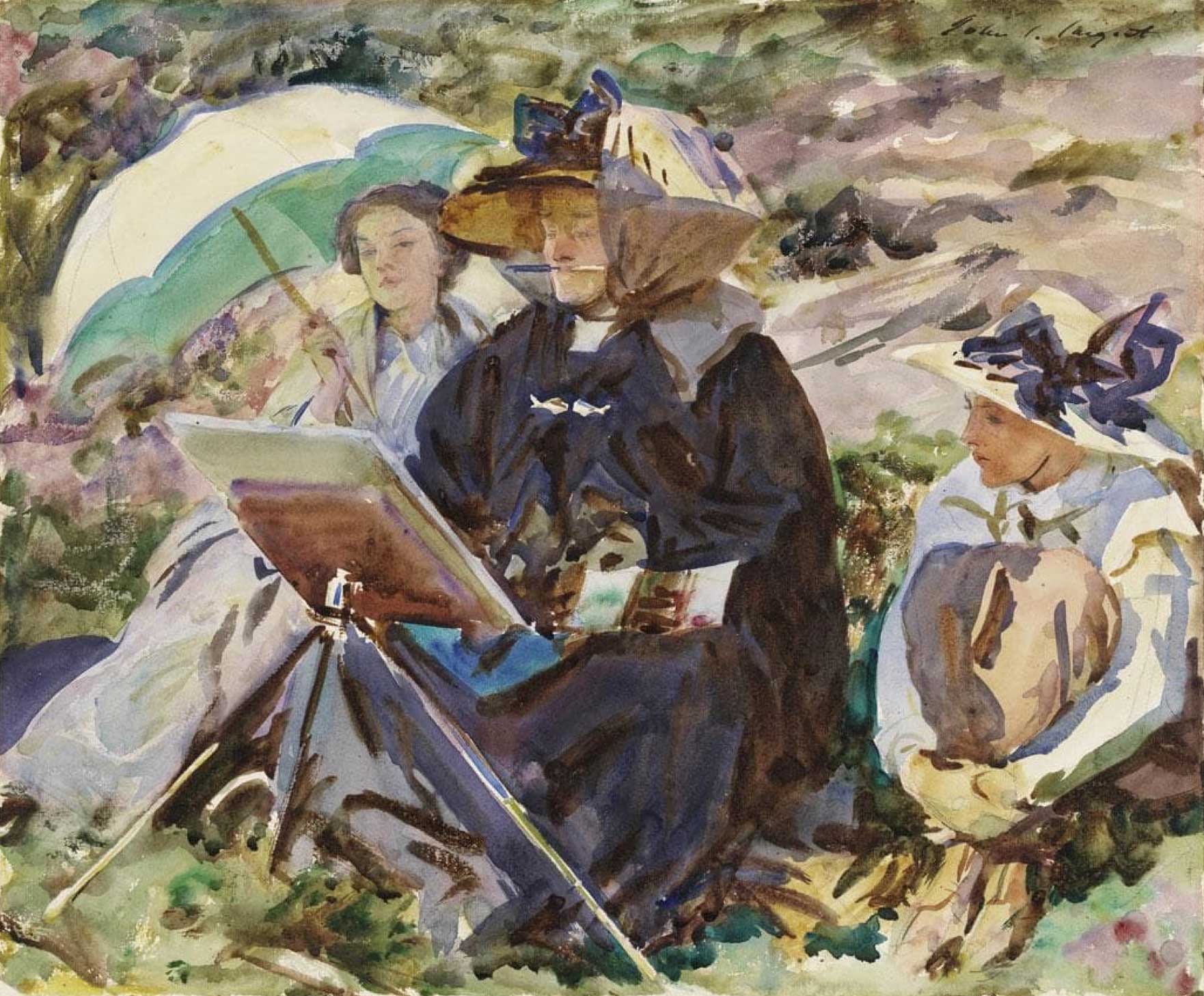
Sargent's watercolors were distinguished by their bold use of color and confident brushwork. He had a keen eye for composition, effectively capturing the essence of his subjects with loose, gestural strokes and an economy of means. His works ranged from landscapes and seascapes to genre scenes and intimate portraits, each imbued with a sense of immediacy and vitality.
Throughout his career, Sargent exhibited his watercolor paintings in major exhibitions, earning critical acclaim and admiration for his skillful manipulation of the medium. His watercolors were highly sought after by collectors, further solidifying his reputation as a versatile and accomplished artist.
In his later years, Sargent spent significant time traveling and exploring various locales, including Venice, the Middle East, and the United States. These journeys provided him with abundant inspiration for his watercolor works, capturing the unique characteristics and spirit of each place with his distinct artistic style.
John Singer Sargent's watercolors continue to be celebrated for their beauty, technical proficiency, and emotive qualities. His ability to harness the translucent and fluid nature of watercolor allowed him to create vibrant, evocative compositions that exemplify his mastery of the medium. Today, his watercolor paintings are displayed in prestigious museums and galleries worldwide, captivating viewers with their luminosity, skillful brushwork, and ability to capture the essence of a moment.
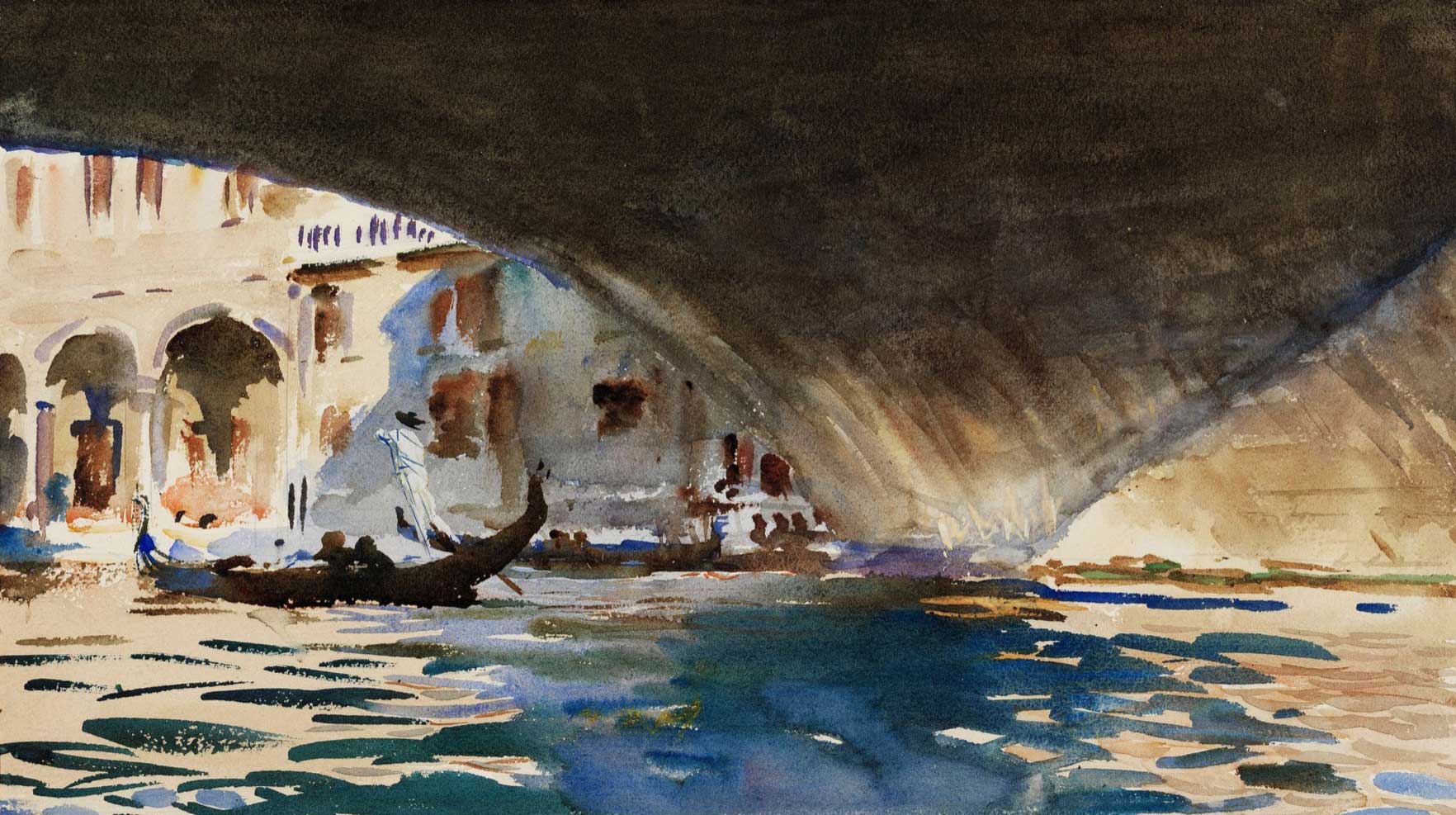
John Singer Sargent employed various techniques and approaches in his watercolor paintings, showcasing his mastery of the medium. Here are some key aspects of Sargent's watercolor techniques:
Bold Use of Color: Sargent was known for his bold and vibrant use of color in his watercolor works. He often employed a wide range of hues, using complementary colors to create visual impact and depth. His confident and judicious application of color resulted in dynamic and lively compositions.
Translucent Washes: Sargent utilized translucent washes to build up layers of color and create a sense of depth in his watercolors. By diluting his pigments with water, he achieved subtle gradations and delicate transitions between tones. This technique allowed him to capture the luminosity and transparency that are characteristic of watercolor painting.
Wet-on-Wet Technique: Sargent often employed the wet-on-wet technique, where he applied washes of color onto a damp or wet surface. This technique allowed the pigments to blend and flow freely, creating soft edges and seamlessly merging tones. It also facilitated the creation of atmospheric effects and the depiction of water and reflections.
Loose and Expressive Brushwork: Sargent's brushwork in watercolor was loose, confident, and gestural. He used broad strokes and bold marks to suggest form, texture, and movement. His energetic and expressive brushwork gave his watercolors a sense of spontaneity and vitality.
Economy of Means: Sargent had a remarkable ability to capture the essence of his subjects with economy of means. He used minimal brushstrokes and carefully selected details to suggest form and convey the necessary information, allowing the viewer's imagination to fill in the gaps.
Negative Painting: Sargent employed negative painting techniques in his watercolors, whereby he painted around the subject to define its shape and create a sense of space. By selectively applying color and leaving areas unpainted, he achieved a sense of depth and atmospheric perspective.
Observational Skills: Sargent's watercolor works showcased his keen observation skills. He had a remarkable ability to capture light, shadow, and the play of colors in his subjects, which added a sense of realism and vitality to his paintings. He closely observed the nuances of nature, architecture, and human form, translating them into captivating watercolor compositions.
I am still a beginner with watercolor but I think I am in love with this medium. First I was afraid but then I realized don’t be, nothing is going to happen before you add water. It is so peaceful to just watch the connection when you add water and let it go for it’s own way. For me it’s like a meditation. I just love it! - Anette S.
Well it’s fantastic for travel, very portable in a smaller palette as you don’t require much paint as a little goes a long way.You can use it straight from the tube or in pans in a portable palette. It has a spontaneity in that you can’t control everything it does and also the beauty of watercolour is in part due to letting it do its own thing. - Elizabeth M.
I love love watercolour due to the freedom it brings. Not only freedom in the medium of watercolour- by doing it’s own thing, but also in the artist being freed from control. It is in the ‘letting go’ that true creativity is released, in working together with the flow of water and pigments instead of trying to control the flow. Then there is a point where the artist need to withdraw and trust the process.This was very liberating to me. - Martie D.
I love watercolours for their ability to be delicate or bold - all from the same tube and only using water to change them. I love playing with light - having the white of the paper showing through transparent layers (I try to avoid opaque pigments). I love that I can clean up with water and not have to worry about adding plastics to the environment (I’m looking at you acrylics!). I love how they challenge me every single time I use them. - Karin D.
I love the delicacy and the vividness that can be achieved with the same paints. - Anita C.
Making Blooms spreading out into the watercolour paper, creating interesting transparency, shapes and colours. - Pascaline H.
I love how versatile this medium can be from the spontaneity of blended colors, drips and runs to the ability to render realistic subjects by layering transparent washes of color. It’s by far my favorite. - Monica S.
I love to see the colors, fall off my brush and I can move it to whatever I want it. I need to be careful not to get too much on my brush because you only need very little!! - Evelina R.
Watercolor moves on the paper,like a fish in the sea; it goes wherever it pleases. It's unpredictable. That's why I love being a watercolor artist, it takes me to another world and washes away the dust of the day. - May M.
I am in a love affair with watercolor! I truly love everything about it! Watercolor is my co-creator as I paint, nudging me here and there, calling me to a new color or brushstroke in unpredictable ways. It is like we are in a relationship, taking each other by the hand guiding each other, exploring, and discovering together in a fluid, intimate dance. Beautiful!! - Gail M.
Watercolor is an amazing medium! I started out painting with watercolors over 20 years ago.If all you have is a crayola pack and paper, you can watercolor. But I personally love artist paints like Daniel Smith on 100% cotton paper. I just recently started experimenting with metallic paints and love them as well. - Hope C.
Explore the theme of water in your sketchbook. Focus on capturing the play of light, reflections, and the translucency of water using watercolors. Experiment with different techniques to create realistic or abstract representations of water scenes. Check out how Sargent described water and reflections in his watercolor paintings.
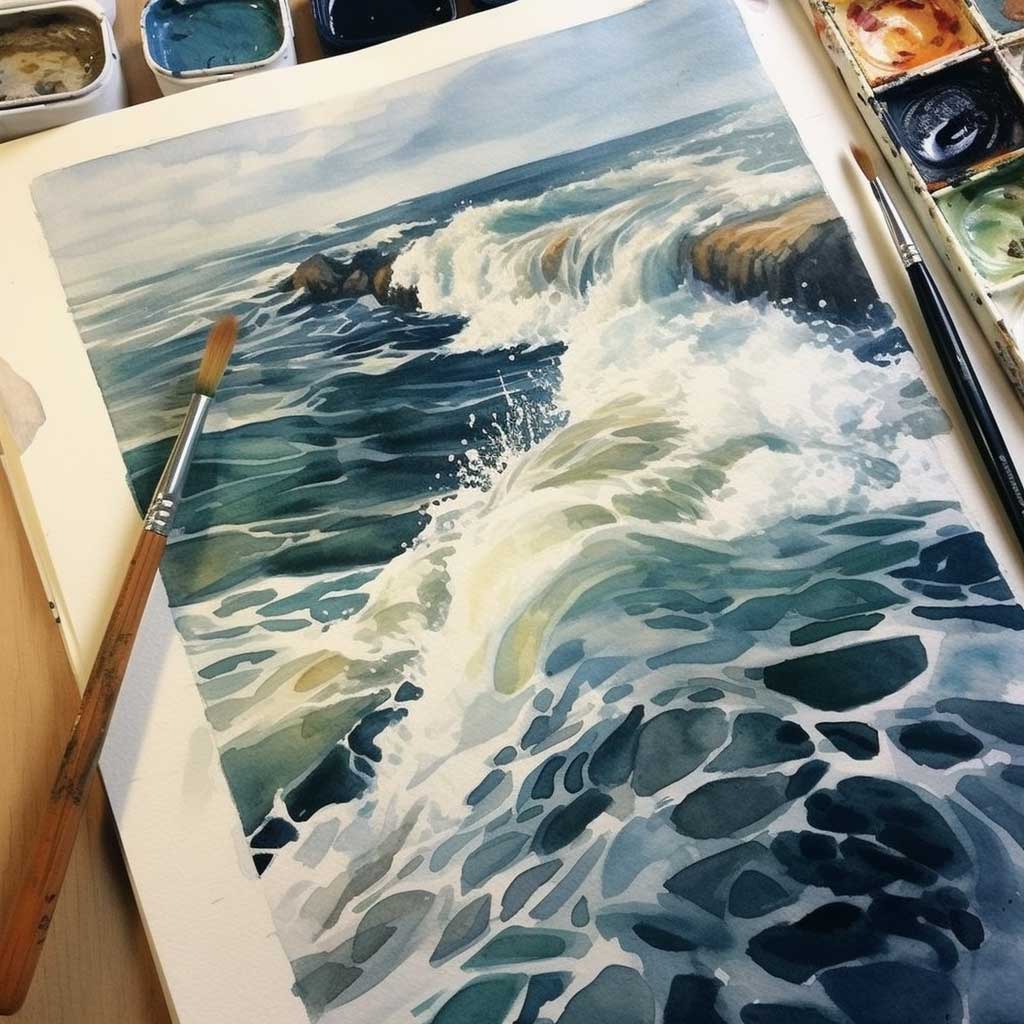
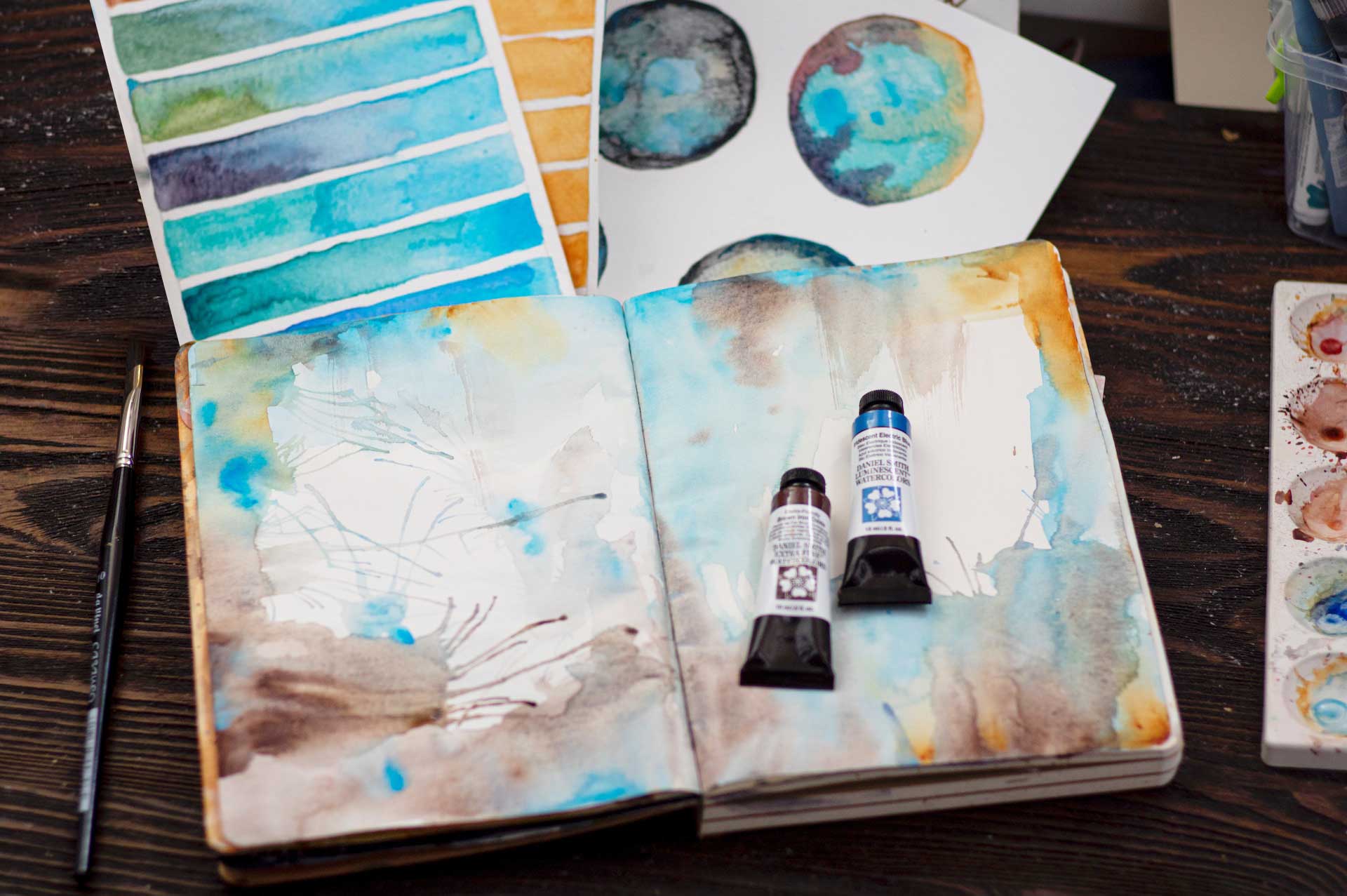
Dedicate a page to exploring different textures and techniques with watercolors. Experiment with washes, dry brush, splattering, lifting, or creating textured effects using salt or plastic wrap. Play with the range of possibilities that watercolors offer in terms of creating texture and visual interest. Let go of control and just play!
Take a good look at Sargent’s watercolors and create a master study. This is an excellent opportunity to expand your knowledge and step into the shoes of another artist. Remember the goal is to learn from the process and not overly stress about creating a perfect reproduction. Have fun with it! Check out our Pinterest board for inspiration.

Group in the Simplon, c. 1911
We are absolutely delighted to have you join us in Watercolor Collage, with Ursula Wollenberg. As an artist, Ursula finds immense joy in collaging, particularly in her journals, as they serve as a boundless source of inspiration and a treasure trove of ideas for her creative endeavors.
Collage, a remarkable form of art, entails the intricate process of assembling various fragments into a cohesive and mesmerizing masterpiece.
Enjoy the lesson!
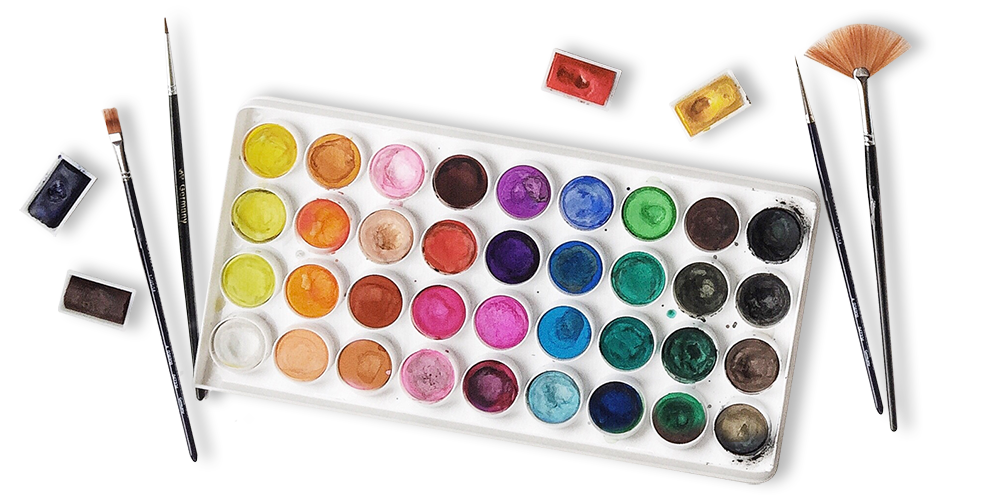
One of my favorite things to do is to curate inspiration. From Pinterest boards to books, resources, playlists and more - I love to share anything that might facilitate learning, expansion, and sparks of curiosity! Being an artist, we naturally crave these things so here are some of this month’s picks from me to you.
I had so much fun curating this list. I hope you enjoy!!
Here are just a few of our fantastic classes! I highly recommend checking them out if you haven’t already. Enjoy!